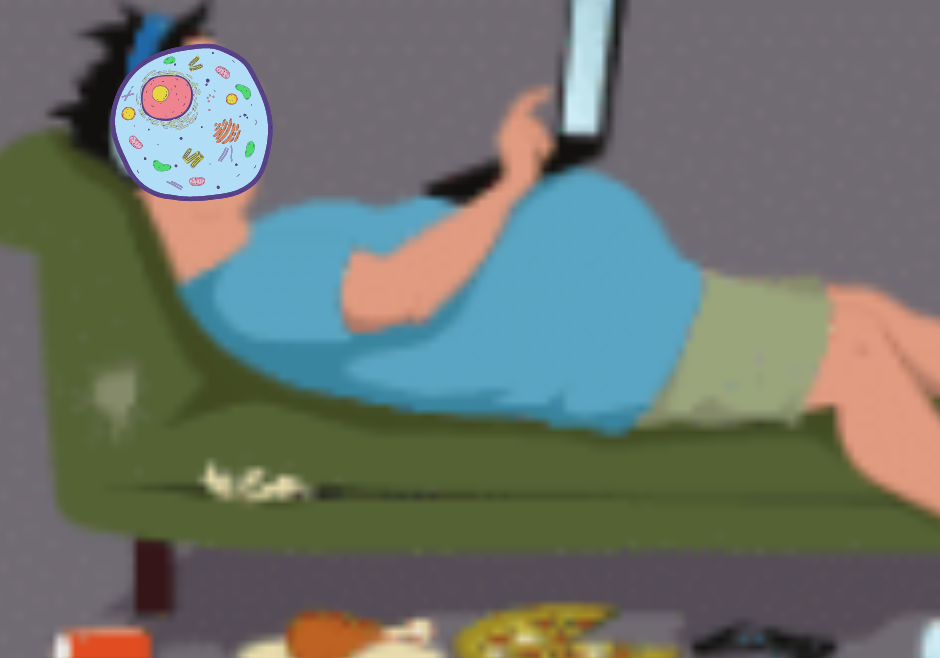Albert Einstein once said, “Once you stop learning, you start dying.” Learning, even the smallest things like picking up insights from a documentary, and going as far as learning a new language or mastering a sport, helps create new neural connections in our brains. Learning, in essence, keeps us evolving. But does this principle apply to our cells too?
Cells don’t exactly “learn,” but they can adapt through epigenetic changes. This means they can adjust how certain genes are expressed in response to their environment. Cells in our body except the sex cells (like sperm and ovum) divide using a process called mitosis, which results in making an exact copy of the original cell. After the growth phase, this is crucial for stuff like healing wounds and just keeping our bodies running smoothly.
However, life isn’t always that straightforward. If cells start dividing too much, that’s often a one-way ticket to cancer. Scientists have looked into this field a lot. Obviously, our bodies don’t want cancer, so they do whatever they can to stop it. For instance, when there’s a genetic hiccup, the cell’s cycle—the process of growth and division—can hit pause while things get fixed. Sometimes, though, the cycle stops indefinitely, without the cell dying. It just kind of hangs around, doing its basic job, being metabolically active, but not really “evolving” by splitting into more cells. They’re known as senescent cells or even Zombie cells in easier terms, thanks to popular science. Back in 2013, a big scientific paper by López-Otín et. al “The Hallmarks of Aging” even declared senescent cells one of the nine main reasons we age.
Now, what do we really know about these cells so far? That’s still a big topic scientists are digging into. This article is based on two peer-reviewed publications in Nature Reviews and Science journals. I highly encourage you to learn more from the sources!
Beyond the Norm: Senescent Cells and Their Unconventional Traits
Senescent cells can be defined as cells in the state of permanent cell cycle arrest. The word “permanent” is of key importance here to differentiate between senescent and quiescent cells, which stopped diving only for some time, and can be “brought back” to an ongoing cell cycle by physiological signals. Senescent cells are also characterized by being immune to pro apoptotic signals, which are usually proteins binding to a cell to make it die. That means that the cell doesn’t die when it encounters its usual “killer”. Metaphorically speaking a senescent cell would be a person who in reaction to a traumatic event reduced their life to staring at a wall, eating, and going to the bathroom (a lot). People would be negatively affected by their presence (heat, smell etc.), but couldn’t get rid of them, because the cops said they are of slight public danger of act. So this person just exists, and makes everyone feel that something is wrong, but it couldn’t be deleted, just like a sugar-daddy Barbie, or Midge.
How to detect Senescent cells?
Those cells can be detected by markers indicating the halt of DNA replication (part of cell cycle), however, the con is that those methods can’t tell whether the cell is senescent, quiescent, or just a differentiated post-mitotic like some types of neurons. We can also identify whether the cell of interest expresses a p16 protein, which is a tumor-suppressor protein, stopping the cell cycle from continuing. That one is expressed by almost all senescent cells.
Many faces of senescent cells
There a several types of cell senescence:
- Stress-induced sentence (M0, mortality phase 0)
- Telomere-initiated senescence (m1, mortality phase 1). They have a few signs of genomic instability.
- Telomeres are the endings of chromosomes (densely packed DNA) that get shorter as we age. More on that in another article:) For now, know that shortened telomeres cause a DNA damage response, that is a stress to the cell resulting in stopping the cell cycle from progressing for the time of damage reparation (which might turn out endless). This type of senescent cell is researched to be cleared by an enzyme with a catalytic protein TERT.
- Telomeres are the endings of chromosomes (densely packed DNA) that get shorter as we age. More on that in another article:) For now, know that shortened telomeres cause a DNA damage response, that is a stress to the cell resulting in stopping the cell cycle from progressing for the time of damage reparation (which might turn out endless). This type of senescent cell is researched to be cleared by an enzyme with a catalytic protein TERT.
- Agonescent cells with a lot of genomic instability
What causes a healthy cell to go into senescence?
The mechanisms of why senescence happens are not fully understood. Research suggests that epithelial cells (top layer skin cells) or damaged fibroblasts (super cool cells that help to keep your body keep shape and heal wounds) go into senescence, while damaged lymphocytes (white blood, immune cells) go straight into apoptosis (death). It’s true that the numbers of senescent cells increase with age, but their overall concentration in tissues remains low, and there is growing research and trials on how we can eliminate them from our bodies.
Other than telomere-shortening, the causes of cell senescence include
- Damage of the DNA in other regions than the telomere
A common cause of such damage is chemotherapy in cancer.
- Chromatin perturbation:
Chromatin is densely packed DNA. When wrapped around histone proteins, it forms a chromosome. When chromatin is made to go to its euchromatin, genetically active form, by a chemical called HDAi, it induces senescence. - Oncogenes:
Now, let’s distinguish some terms- gene: a basic genetic information unit of a body
- mutagene: a physical or chemical agent that may cause mutation is the genome (gene sequence will be rearranged)
- oncogene: mutant versions of normal genes that have the potential to become a tumor. Rather acquired than inherited.
When a cell encounters an oncogene, it usually undergoes senescence. A cell with an oncogene is most likely a “faulty” one. This is not the case where we are beautiful because we are different. In the ideal scenario, faulty cells stop dividing.
- Stress and others:
Factors such as prolonged exposure to reactive oxygen species caused by long signaling of anti-mitotic cytokines (proteins) induce senescence. The formation of micronuclei (a small, nucleus-like organelle) confounds transcription (part of the G1 phase of the cell cycle.)
Despite different types, senescent cells are genetically active, meaning that they express (turn on) or silence various genes, often those connected to progressing to the different stages of the cell cycle.
The moral court: are senescent cells good or bad?
Senescent cells are not fully bad. Just being alive in today’s world means that we will encounter mutagens like the sun. Senescence is an organism’s way of protecting itself from developing cancer by allowing the cells with mutations to divide and accumulate. Likely, nature planned it this way to ensure that we’d be able to reproduce before things like cancer kill us. However, with the drastic increase in human lifespan, the methods that work well in protecting the young organism, fail when it comes to preserving the organisms beyond standard reproductive age. This theory is called antagonistic pleiotropy.
Why are the senescent cells bad at all, then? It is because they don’t contribute to maintaining the organism in any way, and they secrete a metabolite called SASP, which was liked to trigger the progression of the nearby cells to become cancerous. SASP is thought to be one of the drivers of tissue degeneration and multiple age-related diseases like arthritis or osteoarthritis.
Can we prevent cellular senescence?
There’s an answer that often receives an unwelcome response: we’re not completely certain. However, an umbrella review encompassing 8 distinct studies revealed a correlation (remember, not causation!) between increased self-reported physical activity and reduced p16 protein activity in T cells, which is associated with senescent cells. These studies involved individuals aged 18 to 80 years. The results suggest longer telomeres, reduced levels of circulating p16 and p53 tumor-related proteins, and heightened DNA resilience against reactive oxygen species and other mutagens. All in all, it wouldn’t hurt to move for the sake of your future self 😉
From Zombies to Longevity
The study of senescent cells is still at the beginning of its development; many questions are unanswered, and what we know needs more replication in other studies. Nevertheless, addressing this hallmark of aging is likely to help us on our way to healthy longevity. Both natural and synthetic senolytics (drugs that would get rid of senescent cells) are being created and tested, so there is likely a bright future ahead of the field.
Sources:
Paper no1 in Science by Jan M. van Deursen “Selolytic therapies for healthy longevity” 2020
Pap No3 by Xu Zhang “Exercise Counters the Age-Related Accumulation of Senescent Cells” 2022




